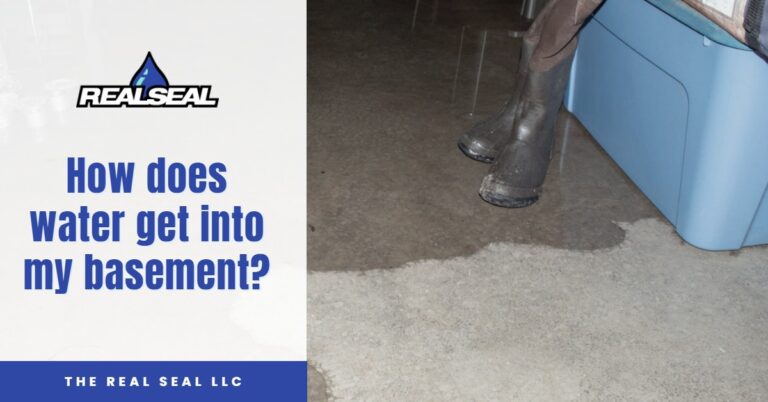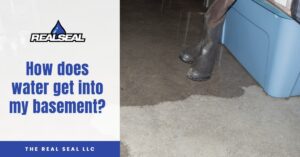A flooded basement is no fun, especially when you discover it in the morning and have to go to work. How can you leave your house like that? What is the cause of water in my basement? And, most importantly, how do I stop it from happening again?
3 Causes of Water in Your Basement
- Over-The-Top Seepage
- Through-The-Foundation Seepage
- Under-The-Floor Seepage
Over-The-Top Seepage
Starting with over-the-top seepage, we all know that water finds a way. It’s lazy, but more to the point, it is persistent. While slow going, over time water can wear away at the mortar joints in the brick siding of your home. This can create paths through the brick for the water to travel. It will then “Plinko” its way down the joints until it hits the top of the foundation. From there, it spills over and down the face of the wall.
Water comes in the same manner when landscaping is too high, flower boxes are installed, driveways are poured too high, or the original construction put the house in a depressed bowl compared to neighbors. When these symptoms are present, water can build up and spill over-the-top of the foundation, right under your siding. If you have vinyl siding, it is vitally important to have landscaping done to preventatively stop these issues.
Other possible causes of water in your basement are:
- Bad window Seals
- Bad door seals
- Chimney cap/sill broken or missing
- Broken water lines in the wall
- Raised porches against the foundation
Foundation Cracks, Voids, Tie Rods, and Rock Pockets
Foundation Cracks are the most common way water comes through the foundation. Most foundation cracks are normal, formed through shrinkage, initial settlement, or stress points on the foundation. Once cracked, they form a path that water can follow to enter the basement. Mostly found to be leaking at the bottom, though the cracks can leak in the entire length of the void. Foundation Cracks can commonly be found under I-Beams, Window Wells, Corners and middle of the wall.
Voids are formed when something is removed from the wall. Old pipes are especially common. Less common, but still seen, are framed out voids intentionally put there for access through the wall. Problem is, it creates a big hole that can allow water in too!
Tie rods are the form ties used to keep the foundation forms together while the concrete dried. These metal clips can rust out over time, creating a pathway for water to enter the basement.
Rock Pockets, or Honeycombing, are caused when the concrete was not initially settled properly in the foundation forms. Nowadays, we use vibrators to make sure all the cement slurry mixes and settles into the forms to avoid these issues. These voids can allow water unique pathways through the concrete and into the home.
Under-the-floor Seepage
Commonly the most expensive to fix, under-the-floor seepage happens when water builds up, Hydrostatic Pressure, and forces its way through the cracks in the floor. Another common area to see this water is at the Cove Joint, where the foundation wall meets the floor. These are separate pours of concrete, so they are not a solid seam and are not waterproofed.
The amount of seepage found with this issue can vary to getting a small towel wet to 8 ft of water in the basement. And yes, we have seen water that bad in a basement.
Regardless of your issue, a qualified, reputable Basement Waterproofing Company can help you solve it. Be sure to do your research before you call, and remember:
Not Everything’s Better When Wet!







2 Responses
Need help my basement is wet when it rains hard for a long time
We’d love to help! Give us a call at 847-756-7987!